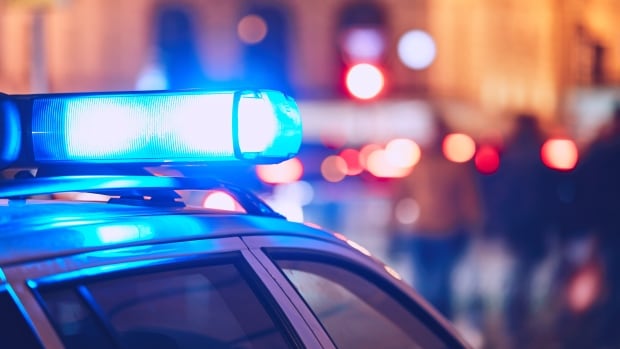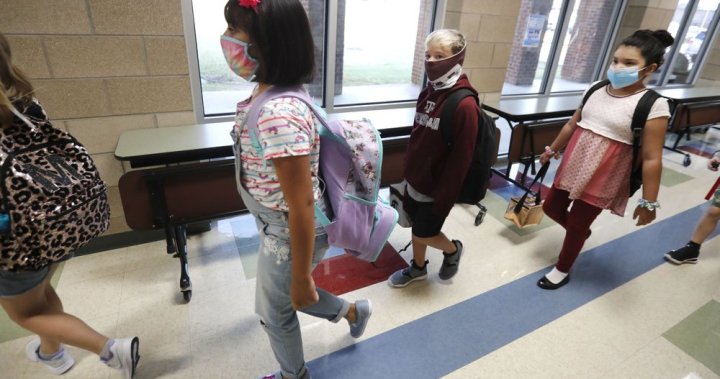3 of every 4 Sask. homicide victims in 2021 were Indigenous
Brett Herman and his younger twin brothers Blade and Braden were always together growing up.
They lived near a schoolyard where they would play, fly kites and build tree houses, Herman said. They would often visit their grandparents, where they enjoyed just being kids.
“Things were more simple when we were younger,” Herman said.
Braden Herman, from Clearwater River Dene Nation in northwestern Saskatchewan, was living in Prince Albert, Sask., when his body was found just outside the city near Little Red River Park on May 11, 2021. He was 26 years old.
Bernie Herman, a now-former RCMP officer who is not related to Braden, is accused of first-degree murder. He pleaded not guilty. His trial will begin next December.
“He was a good kid,” Brett said of Braden. “He was young, still trying to figure out life and stuff.”

Three in four homicide victims in Saskatchewan in 2021 were Indigenous people, Statistics Canada data shows. For its homicide data, StatsCan classifies someone as Indigenous if they are First Nations, Métis, Inuit or have “an Indigenous identity where the Indigenous group is not known to police.”
Indigenous people accounted for 17 per cent of the province’s population in 2021, census data shows.
Police in Saskatchewan reported 70 homicides last year, a provincial record and an increase of six from the previous year.
Braden Herman was one of the 53 Indigenous homicide victims in Saskatchewan last year — the most in Canada and the most reported by police in Saskatchewan since at least 2014.
Alberta police reported 41 Indigenous homicide victims last year, the second most in Canada, data shows.
Experts told CBC News that differences in service delivery, such as policing, in rural and urban areas may have played a part in the numbers. But the disproportionate amount of Indigenous people killed is not a new issue, they said, and the deaths are tied to the lasting impacts of colonialism and poverty.
“Based on the treatment of Indigenous people over hundreds of years, we should [not] be surprised that this is happening,” said Hilary Peterson, a lawyer who lectures on criminal law and youth crime at the University of Saskatchewan. She is a citizen of the Métis Nation—Saskatchewan.
“This is a consequence of mistreatment.”
The link between colonialism, systemic racism and poverty has been made in multiple inquiries and commissions examining the overrepresentation of Indigenous people in the justice system and other issues, such as missing and murdered Indigenous women and girls.
The report of the Royal Commission on Aboriginal Peoples, released in 1996, stated that these factors have made Indigenous people “poor beyond poverty.”
“Poverty creates a lot of social despair — and where there is poverty, there is crime,” said John Hansen, a University of Saskatchewan associate professor of sociology, whose focus is on Indigenous justice, and crime and society. He is a member of the Opaskweyak Cree Nation in Manitoba.
Indigenous people were pushed to reserves that did not have the same resources as non-Indigenous communities, such as clean drinking water. The federal Indian Act created laws that, among other things, were designed to keep Indigenous people and their communities at a certain economic level to maintain their Indigenous status on paper.
In 2021, Indigenous people in Saskatchewan — particularly those living on reserve — made significantly less income on average than non-Indigenous people, and a disproportionate number of Indigenous people lived in homes that were overcrowded and in need of repairs, census data shows.
Survivors of systemic assimilation, such as residential schools, were taught to disassociate from their culture, Hansen said. Many were taken from their homes by RCMP officers and brought to the institutions, and many were abused by teachers if they expressed their culture.
This learned violence and the disconnection from culture was passed on, Hansen said, using violence against Indigenous women as an example.
“Violence against the Indigenous women is very disturbing, particularly because the Indigenous women are the centre of Indigenous culture,” Hansen said.
Data shows most homicide victims reported by police in Saskatchewan are men, but Indigenous women are also overrepresented among female homicide victims.
Seventeen homicide victims in Saskatchewan last year were women, data shows. Eleven of them — or nearly two-thirds — were Indigenous.
Chasity Poundmaker, 32, was one of them.
Poundmaker, a mother of three, was an educated woman who embraced her Indigenous culture. She made dreamcatchers, beaded, smudged and prayed to the Creator, according to an obituary.
“She was a bubbly person,” Jonathan Cardinal, her older brother, told CBC News.
On March 4, 2021, RCMP responded to a call about an injured woman in an apartment building in Swift Current, Sask. They found Poundmaker’s mother Lucinda and sent her to hospital, but she informed police that another woman had been injured.
Police found Poundmaker’s body in a different apartment building.
Her sister Roxanne Poundmaker, 34, was charged with second-degree murder and attempted murder.
Cardinal is currently taking care of Roxanne Poundmaker’s two oldest children. They’re still confused about the situation, he said, adding that they were close with their aunty.
“Even though we didn’t get to see each other much, she tried to create bonds with them,” he said.
Hansen said some Indigenous people involved in the criminal justice system tend not to feel connected to Indigenous nor Western society.
More homicides in rural Sask., data suggests
Data suggests most of Saskatchewan’s homicide victims were killed in rural areas.
Ten of the 15 homicide victims in the Regina census metropolitan area (CMA) last year were Indigenous people. This was third-most in the country, behind the Edmonton and Winnipeg CMAs, which have the highest urban Indigenous populations in Canada, census data shows.
There were eight total homicides in the Saskatoon CMA in 2021, data shows.
The discrepancy between the number of victims in rural versus urban areas likely stems from a lack of services or resources in rural Saskatchewan, such as lesser police presence, a lack of counselling support and less access to bus services for people trying to escape domestic violence, said Peterson, from the U of S.
The over- and under-policing of Indigenous people — which has also been cited in various inquiries and commissions — may be a contributing factor, too, said Benjamin Ralston, a sessional lecturer at the University of Saskatchewan with a focus on Indigenous law. He is not Indigenous.
Over-policing speaks to greater surveillance, which could lead to police catching more criminal acts, and things like carding — when police officers randomly request personal information from a citizen. Historically, marginalized people have been disproportionately affected by the practice.
There have also been instances where Indigenous people will call the police, then the person who filed the report will be charged for something unrelated, Ralston said, referring to Colten Boushie’s mother as an example.
Under-policing, meanwhile, particularly affects remote communities, he said. They already have little to no police presence, and the available police service may be reluctant to respond to calls.
“It’s really only once offending has reached a certain extreme that you will actually see a police response on the ground,” said Ralston, adding that earlier intervention could, in theory, prevent worse outcomes.
Both situations create distrust, because people either feel targeted by police, or like there’s no point in calling the police at all, he said.
No silver-bullet solution
The underlying issues are not novel, Peterson said.
The most needed step to address them is funding for social programs that can help lift Indigenous people out of poverty and lower crime rates, such as housing programs, she said.
The experts CBC News interviewed each noted that Indigenous peoples and their respective communities have their own ways of justice, so they should also be given greater autonomy.
“Indigenous people know what needs to be done,” Peterson said.
“For actual progress to be made, we need to be properly funding these resources.”
Hansen said there needs to be a return to Indigenous cultural values, and greater integration of Indigenous people and the various Indigenous world views in society’s institutions.





